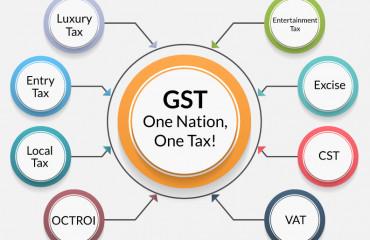
The youth should aspire to be job givers, not just job seekers. Who gave this clarion call? Most would guess that it was our Prime Minister, during his electoral campaign of 2014. But it was not just him.
The youth should aspire to be job givers, not just job seekers. Who gave this clarion call? Most would guess that it was our Prime Minister, during his electoral campaign of 2014. But it was not just him. This mantra has been chanted by leaders across the political spectrum repeatedly over the years, and has now become a national slogan. The President of India echoed it, so did the Chief Minister of Punjab. The Swadeshi Jagran Manch swears by it. Business schools sell this message to their management graduates. But how to succeed as a job giver, i.e., an entrepreneur? Unfortunately, only one in 10 entrepreneurs succeeds. This ratio is still better than chances of landing a formal sector job. Hence, the slogan makes sense in a country where barely 10% of the workforce is in the organized sector. Only a fraction of India's workforce has contractual rights like social security, pension or health benefits. For the rest, it is casual work, uncertain livelihoods and temporary jobs. Also, you can't sugar-coat this precarity by calling it the exciting gig economy. Joblessness among the youth is a global problem, aggravated by disruptive threats of automation and artificial intelligence. So, the youth are encouraged to become innovators and startup heroes.
What does the 'job givers' landscape look like? India has an estimated 64 million micro, small or medium-sized enterprises (MSMEs), which is where jobs are being created. Add to these even-smaller nano enterprises, of which there may be another 30 million that are neither registered nor counted. They may be vegetable sellers accepting UPI digital payments, but they are otherwise completely informal. To succeed as a small, micro or nano enterprise, what does it take? There is not enough large-scale granular data on such enterprises. But there are many small sample surveys that offer important insights. A National Commission on Enterprises in the Unorganized Sector was set up in 2004. It generated several reports and led to laws like the one for the rights of street hawkers. It had one remarkable revelation regarding employment in the informal sector. Only 18% of informal-sector workers said that they worked for an identified employer. The rest had multiple 'jobs' and hence no single employer and no real employment relationship. This was decades before the 'gig economy' became popular. Another landmark report was produced in 2019 by the U.K. Sinha committee appointed by the Reserve Bank of India. It highlighted the woes that plague small businesses, from access to credit, working capital and markets, payment delays and problems of financial and digital literacy. There has been progress on some aspects highlighted by the Sinha committee, and the emergence of fintech is also helping address some credit access issues. Here are three small but effective ideas that can be implemented quickly.
The first relates to payment delays faced by entrepreneurs functioning with a business-to-business model. The national MSME Act specifies that payment to small businesses cannot be delayed by more than 45 days. But this law is observed more in the breach. Small vendors hesitate to sue their defaulting customer or take him to bankruptcy court, or name and shame him on a government portal. Because the small guy depends on repeat business, he cannot afford to be black-listed by an offended big customer. The process, therefore, should be made automatic. As soon as a goods and services tax (GST) invoice is generated by the vendor, the 45-day clock should start ticking. This can be automated by linking vendors' Udyam registration with the GST network. When the 45 days are up, either the GST credit gets reversed or a penalty is imposed. This shouldn't need court action or complaint, and work purely by automation.
The second idea is on digitalization. Small vendors can benefit immensely by going digital. This does not mean merely adopting UPI payments but making all aspects of business digital. They need a super app, which is like a mini Enterprise Resource Planning (ERP) software, used for accounts, tax filing, inventory control, loan repayments and so on. An ERP app should be extremely user-friendly, available in multiple languages and for free download. Just as the government developed the Bhim app to popularize UPI, so also it should sponsor a 'hackathon', or a competition to build a free mini ERP app for all Udyam registered businesses. Udyam registrations are barely 15 million, about 25% of the potential. This will provide added incentive to register.
The third idea is to enable access to capital in the form of debt or equity. Most small retail vendors are known in their neighbourhoods. Their regular customers would gladly give them credit for working capital. Why not allow peer-to-peer lending, fortified by block chain contracts? To prevent remote vultures of private equity from exploiting this, such peer lending can be restricted to a district or pin code. This concept can be extended to raise local equity, with shareholder contracts standardized. This may create local equity and credit pools and solve some capital requirement problems. The peer-to-peer lending model needs to be blessed by the Reserve Bank of India, and can begin as a sandbox initiative.
To rev up the entrepreneurship engine, and create more job givers and creators, all kinds of policy tweaks are needed. We need the ease of not just doing business, but also opening and shutting down a business, especially in the nano and micro world.
